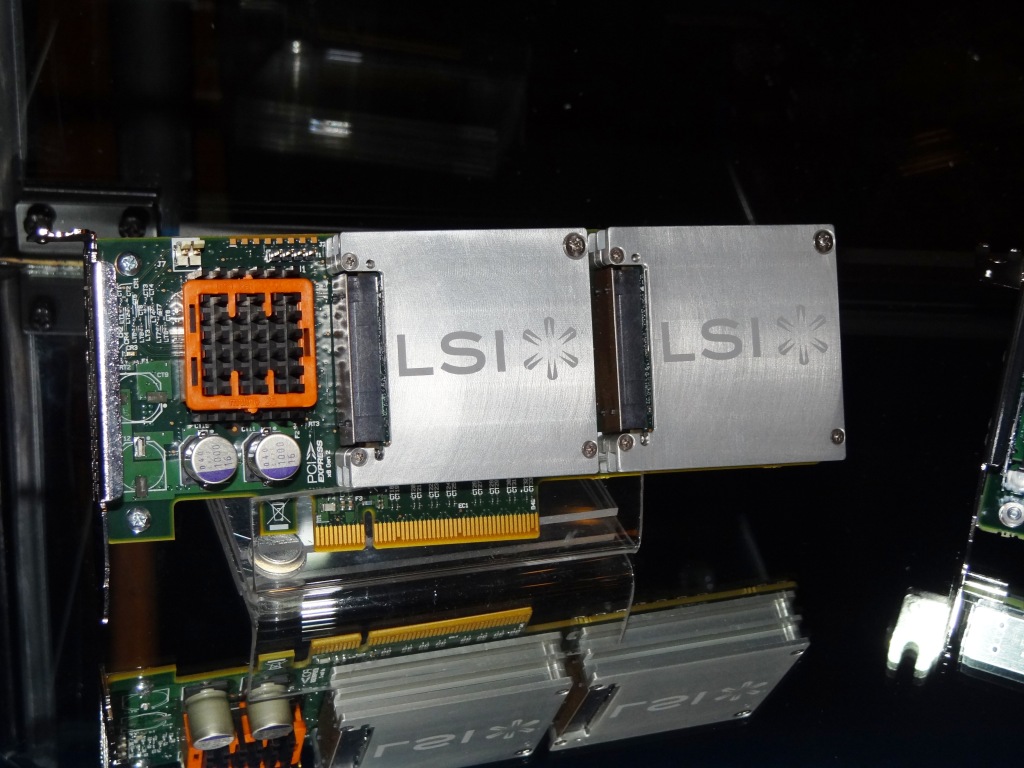We continue our coverage of exciting new products being announced and previewed this week at AIS 2011 (LSI Accelerating Innovation Summit).
Right on the heels of the 12Gb/s introduction, LSI is trumping themselves with a new version of the WarpDrive, an innovative approach to PCI-E based solid state solutions. The space for this type of device is heating up after not only LSIs success, but with the emergence of Fusion-IO devices as a key competitor.
There is a very large market right now in flash acceleration that is growing exponentially, and LSI is seeking to capture this market with a new generation of the WarpDrive.
A key consideration for many data center managers is having hardware that just works. This is an area that LSI excels in as the WarpDrive product line capitalizes upon LSIs own proven drivers and firmwares that have been solid performers for years. That commonality and years of reliable performance are sure to be a key consideration for customers.
Of added benefit is the fact that current LSI Graphical User Interfaces (MegaRAID Storage Manager for example) are literally plug and play with the WarpDrive line. This allows for a truly seamless integration into existing systems.
Here we see that the new WarpDrive 2 retains the same size and form factor as its predecessor and also integrates new shielding around the NAND devices that are attached. With capacities up to 1.6 TB from the 300 GB limit with the previous SLC version, this is sure to increase the amount of performance acceleration space that can be offered to the customer per slot.
 Leveraging the new endurance of high endurance MLC, LSI can offer lower price points and pave the way for these higher capacity models. The previous generation of the WarpDrive utilized SF1500 processors while the new version is going to the have much more powerful on board processors, not only in regards to the embedded SSD controllers, but also into the ROC controlling the device.
Leveraging the new endurance of high endurance MLC, LSI can offer lower price points and pave the way for these higher capacity models. The previous generation of the WarpDrive utilized SF1500 processors while the new version is going to the have much more powerful on board processors, not only in regards to the embedded SSD controllers, but also into the ROC controlling the device.
Here we can see that the new version of WarpDrive is maintaining the same form factor as its predecessor on the right bottom of the rack. Key performance increases are definitely going to be seen and, even though no ‘official’ numbers have been thrown about, a rough 2x increase in performance has been mentioned.
 Lets continue on and take a closer look at some exciting functionality coming in the future!
Lets continue on and take a closer look at some exciting functionality coming in the future!
 The SSD Review The Worlds Dedicated SSD Education and Review Resource |
The SSD Review The Worlds Dedicated SSD Education and Review Resource | 